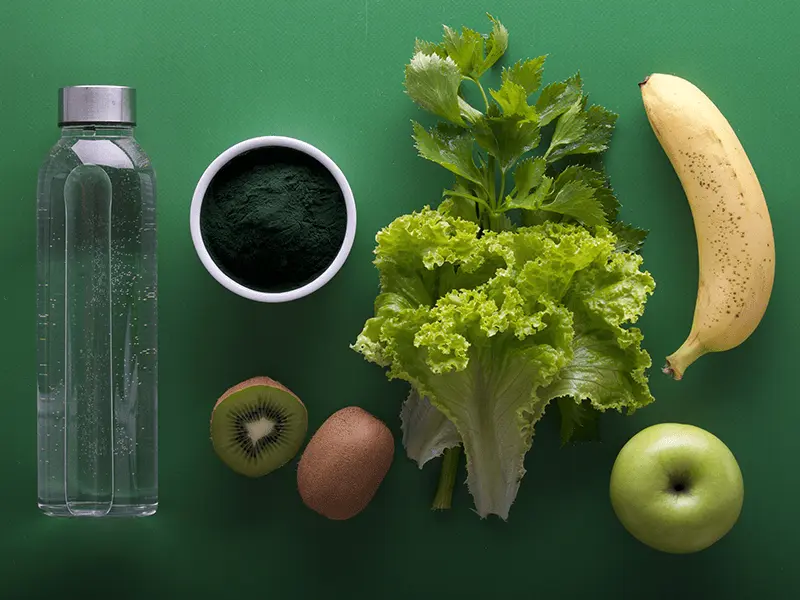Watch our video series ‘Food as medicine’ on the resources page to find out more
The NE & Y HCC is delighted to have collaborated with Dr Claudine Matthews on a number of activities. Dr Claudine Matthews, is an award winning Consultant Dietitian with over 20 years of experience working as a dietitian in the UK, in an array of conditions. For more details visit Sickle Cell Nutrition Academy (SCNA) https://sicklecellnutritionacademy.com/
Eating a balanced and nutrient-rich diet can help support your energy levels, maintain a healthy weight, and contribute to the optimal function of your body. This page offers guidance on making informed nutritional choices to complement your sickle cell care plan.
The Power of Hydration
Staying adequately hydrated is one of the most crucial aspects of managing sickle cell disorder. Dehydration can increase the viscosity of your blood, making it easier for red blood cells to sickle and potentially leading to pain crises.
- Aim for consistent fluid intake throughout the day. Don’t wait until you feel thirsty to drink.
- Water is your best friend. Make it your primary beverage.
- Other good sources of fluids include: herbal teas, diluted fruit juices, and clear broths.
- Be mindful of caffeinated and sugary drinks, as they can be dehydrating or provide empty calories.
- Increase your fluid intake during:
- Hot weather
- Physical activity
- Episodes of illness, such as fever or diarrhea
- Air travel
The Importance of Folic Acid
Folic acid, a B vitamin, is essential for the production of new red blood cells. People with sickle cell disorder have a higher turnover of red blood cells, making adequate folic acid intake particularly important.
- Good food sources of folic acid include:
- Leafy green vegetables (spinach, kale, collard greens)
- Beans and lentils
- Asparagus and broccoli
- Avocado
- Fortified grains (bread, pasta, cereals)
- Your healthcare provider may also recommend a folic acid supplement. Always follow their guidance on supplementation.
Understanding Iron Intake
It’s a common misconception that people with sickle cell disorder need to consume more iron. In fact, iron overload (hemochromatosis) can be a concern due to frequent blood transfusions.
- Generally, focus on a balanced diet rather than intentionally increasing iron intake.
- Good sources of iron include: red meat, poultry, fish, beans, lentils, and fortified cereals. However, consume these in moderation as part of a balanced diet.
- It’s crucial to have your iron levels regularly monitored by your healthcare team. They will advise you on whether any adjustments to your iron intake are necessary.
- Avoid taking iron supplements unless specifically recommended by your doctor.
Fueling Your Body with Antioxidants
Oxidative stress, caused by an imbalance between free radicals and antioxidants in the body, can play a role in the complications of sickle cell disorder. Consuming antioxidant-rich foods can help combat this.
- Load up on colorful fruits and vegetables:
- Berries (blueberries, strawberries, raspberries)
- Citrus fruits (oranges, lemons, limes)
- Dark leafy greens
- Bell peppers
- Tomatoes
- Sweet potatoes
- Other good sources of antioxidants include:
- Nuts and seeds
- Dark chocolate (in moderation)
- Green tea
Maintaining Energy Levels Through Diet
Fatigue is a common symptom of sickle cell disorder. Eating a balanced diet that provides sustained energy throughout the day is important.
- Focus on complex carbohydrates: whole grains (brown rice, quinoa, whole-wheat bread), oats, and legumes provide a slow and steady release of energy.
- Include lean protein sources: chicken, fish, beans, lentils, tofu, and eggs are essential for tissue repair and maintaining energy.
- Don’t forget healthy fats: avocados, nuts, seeds, and olive oil are important for overall health and can contribute to satiety.
- Limit processed foods and sugary drinks: these can lead to rapid energy spikes followed by crashes. Aim for whole, unprocessed foods as much as possible.
- Eat regular meals and snacks: this helps to maintain stable blood sugar levels and prevent energy dips.
Supporting Bone Health
People with sickle cell disorder may be at an increased risk of bone problems. Ensuring adequate intake of calcium and vitamin D is important for maintaining strong and healthy bones.
- Good sources of calcium include:
- Dairy products (milk, yogurt, cheese)
- Fortified plant-based milk alternatives
- Leafy green vegetables 1 (kale, spinach) www.cmwestmichigan.com
- Tofu
- Fortified foods (orange juice, cereals)
- Sources of vitamin D include:
- Sunlight (with appropriate sun safety measures)
- Fortified foods (milk, cereals, orange juice)
- Fatty fish (salmon, tuna)
- Your doctor may recommend a vitamin D supplement.
Important Considerations and Guidance
- Listen to your body: Pay attention to how different foods make you feel.
- Maintain a healthy weight: Both underweight and overweight can pose challenges for people with sickle cell disorder.
- Be mindful of any dietary restrictions or recommendations from your healthcare team.
- Individual nutritional needs can vary. What works well for one person may not be ideal for another.
The information provided on this page is for general guidance only and should not be considered a substitute for professional medical advice. It is essential to discuss your specific nutritional needs and any dietary changes with your doctor, a registered dietitian, or a nutritionist experienced in the management of sickle cell disorder.
We encourage you to:
- Talk to your haematologist or primary care physician about your nutritional needs.
- Consider consulting a registered dietitian or nutritionist specialising in sickle cell disorder for personalised dietary advice and meal planning.
- Connect with patient support groups to share experiences and learn from others.
By making informed food choices and working closely with your healthcare team, you can empower yourself to manage your sickle cell disorder and support your overall wellbeing.
